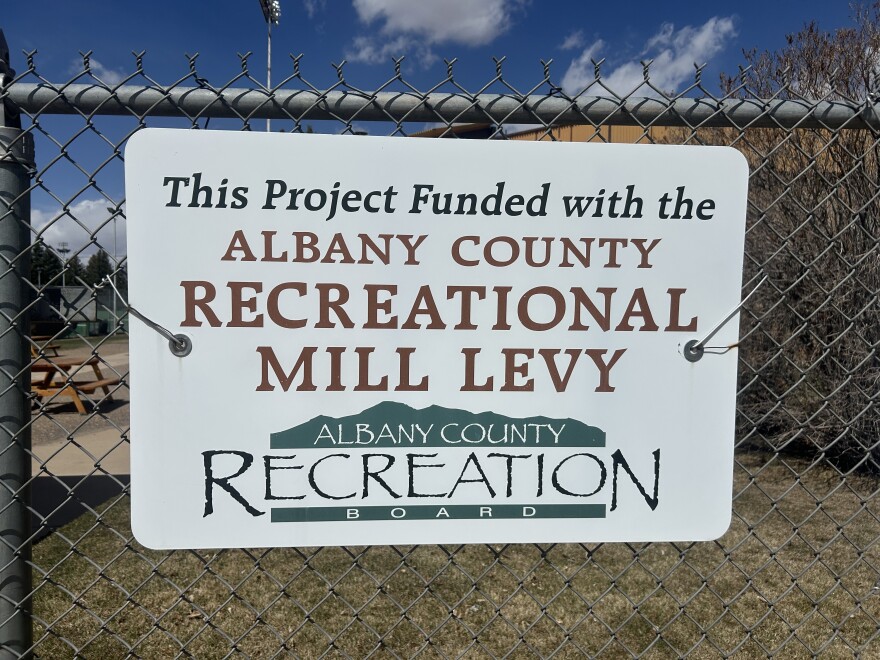School boards and special districts across Wyoming are facing shrunken budgets after lawmakers made cuts to a major funding stream in the recent legislative general session: property taxes.
Over Zoom, phone calls and in-person meetings, school district leaders have been telling Brian Farmer, executive director of the Wyoming School Boards Association, that they’re worried.
“Folks are becoming nervous as we look at future projections of what will happen to the School Foundation Program Account [SFPA],” said Farmer in a phone interview with Wyoming Public Radio.
The passage of SF 69 during the session means single-family homeowners will see a 25% cut applied to the first $1 million of their home's fair market value.
At the same time, the state is constitutionally required to fund public schools.
Farmer said the concern is that savings account he mentioned might run low on cash due to laws like SF 69. The SFPA is partially funded by property tax revenues, and the account could enter a structural deficit if expenditures outpace revenue.
When the balance of the SFPA gets below $100 million, it dips into Wyoming’s rainy day fund, otherwise known as the Legislative Stabilization Reserve Account (LSRA). The LSRA, sometimes pronounced “lizz-ruh,” was created in 2005 to help manage the state’s finances during economic downturns.
“ Then the rainy day account goes down,” Farmer said. “Once that rainy day account gets to a certain number, the [LSRA] backstop ceases to exist. The state then would be able to engage in some other financial moves that would result in prorated payments to districts, which would mean, ‘Oh, there's not enough money, so everybody's gonna get a 10% cut,’ or something like that.”
The state Legislature’s nonpartisan staff office projects that at the current rate, with electeds continuing to cut property taxes for homeowners, the SFPA will hit a $686 million shortfall by the 2029-2030 biennium. The SFPA relies on a variety of income streams in addition to property taxes.
Farmer cautioned that between now and then, legislators have a variety of tools at their disposal to prevent a structural deficit and prorated payments to schools. But he said it is a possibility.
If that scenario were to happen, Farmer said that a school district could sue the state for failing to live up to its constitutional obligations. In February, the Wyoming Education Association successfully sued the state for failing to live up to its education funding requirements.
“ A school district could theoretically appeal to [a] court – and then, could the [court] go and seize the funds of the state?” he said.
During the session, lawmakers cited their constituent’s concerns about rising property tax rates in some parts of the state as motivation for passing more cuts.
“A large number of us were sent here to deliver property tax relief and ultimately tax reform to Wyoming families,” said Rep. Tony Locke (R-Casper) on the House floor on Jan. 21. Locke is an endorsee of the Wyoming Freedom Caucus and the sponsor of one property tax bill that ultimately failed to pass.
Special districts feeling the pinch, too
Meanwhile, special districts, like those that serve cemeteries, ambulances, irrigation systems, firefighting and senior citizens, have their own concerns about revenue shortfalls due to property tax reductions.
“There's been talk of some people getting cut up to almost 50%,” said Craig Haslam, president of the Wyoming Association of Special Districts. “Some [have told me] ‘Well, we're only gonna cut a smaller amount than that.’ But most of them are run using volunteers to provide the services. It's still going to be tough for them to go out and put out the fires if they're not able to put fuel in their truck.”
He said voters decide whether to form special districts, and that the reductions to services the cuts will cause aren’t fair to the people who created them in the first place.
“ Special districts are locally formed in each county by the voters and any of those voters in turn vote in what [is] to be assessed,” Haslam said. “And by the legislation coming and saying, ‘Nope, we're going to cut everything,’ you're going against the taxpayers and what they have said they want to do.”
Haslam, along with first responders from Goshen, Platte, Weston and Laramie counties, went to the state Capitol in Cheyenne during the session to talk directly to electeds about the importance of funding special districts with property taxes.
More property tax cuts are on the horizon, including a possible 50% reduction that voters will decide on the 2026 general election ballot.
This reporting was made possible by a grant from the Corporation For Public Broadcasting, supporting state government coverage in the state. Wyoming Public Media and Jackson Hole Community Radio are partnering to cover state issues both on air and online.









